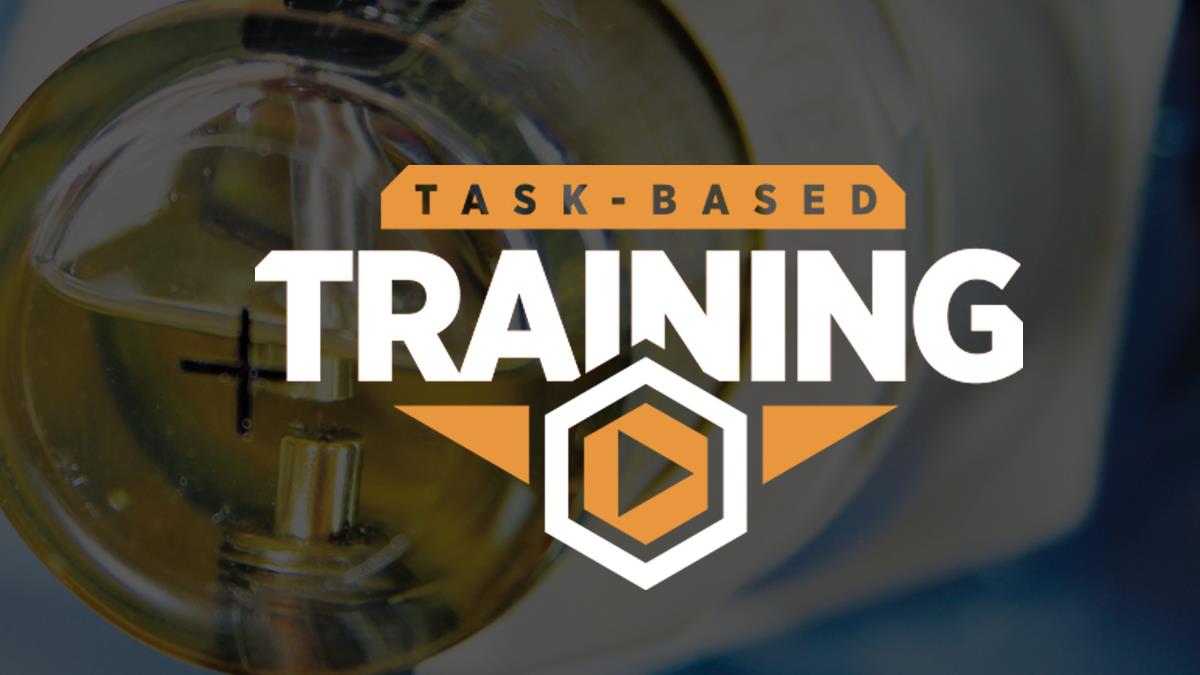Task-Based Training | Inspecting a Bullseye Sight Glass
Tags: onsite oil analysis

What is a bullseye sight glass?
A bullseye sight glass is a transparent window at the oil level, typically made of glass or durable plastic, that allows users to observe oil conditions inside a piece of machinery.
Why use a bullseye sight glass?
First and foremost, a bullseye sight glass can be used to confirm that the oil is at the correct level inside the machine. The sight glass also allows for observation of the oil condition. There are a few things that become very obvious when using a bullseye sight glass: you can see foam, emulsified water, the formation of varnish and more.
Why inspect a bullseye sight glass?
Bullseye sight glasses need to be inspected periodically to see if the oil level fluctuates over time.
We can see if the level has risen:

Figure 1: Sight glass indicating oil level is too high.
If it has fallen:

Figure 2: Sight glass indicating oil level is too low.
Or if it has maintained a consistent level:

Figure 3: Sight glass indicating oil is at the appropriate level.
When inspecting bullseye sight glasses, we’re also looking for the conditions mentioned earlier — we can see staining, varnish formation, foaming or cloudiness in the oil, giving us an early warning of impending machine or lubrication failure.

Figure 4: Sight glass revealing cloudy oil.
What are some of the styles of bullseye sight glasses?
OEM 2D bullseye sight glasses are the most commonly seen sight glass. They typically feature a flat glass pane and brass covering. While they do provide a window into the machine, the view typically isn’t very good.

Figure 5: A typical OEM bullseye sight glass.
3D bullseye sight glasses stick out from the machine, allow for a better view of the lubricant and a more accurate appraisal of oil condition and level. The 3D sight glass allows visual inspections to be performed quickly by anyone walking by the machine.

Figure 6: A 3D bullseye sight glass.
Larger 3D bullseye sight glasses are also available that come equipped with different condition monitoring inspection points, like magnets, corrosion probes and sample valves. These additional inspection tools allow for more in-depth condition monitoring, but the bulk of the inspection can still be performed with the 3D bullseye.

Figure 7: A large 3D bullseye sight glass with inspection points.
Where are bullseye sight glasses installed?
Anywhere from the smallest horsepower motors and pumps to machines with several-hundred-gallon tanks — essentially, anywhere on a machine that has an oil-level plug or port is a great application. Things that are splash-lubricated can especially benefit from bullseye sight glasses.
When do they need to be changed?
This depends on the type of sight glass.
The glass pane on most OEM 2D sight glasses can’t be changed. Over time, this glass will become stained, which can give you a false reading of the oil level and condition. If a sight glass is stained, it needs to be replaced.

Figure 8: A stained OEM 2D sight glass.
3D sight glasses are typically made out of hard plastics and, in an industrial setting, are somewhat prone to being cracked or damaged in some way, in which case, they will need to be replaced. Those working around the protruding sight glass also must be aware not to impact it — since these glasses are at the oil level, a break can cause immediate oil leakage.
Who inspects them?
Typically, this task falls to the lube techs or maintenance techs, but with a 3D sight glass, anyone passing by can easily take on the role of inspector — if they see that the oil is at the right level and in good condition, they can move right along; if they see something is wrong with the oil or sight glass, they can report it, and the problem can be addressed quickly.
Inspecting a bullseye sight glass
Step 1: Clean the surface of the bullseye sight glass with a lint-free industrial towel.
Step 2: Use a flashlight or laser pointer to illuminate the fluid in the sight glass — this will aid in the inspection process.

Figure 9: Using a flashlight to illuminate the oil inside the bullseye sight glass.
Step 3: Check the oil level; it should be at the middle of the sight glass. If the oil is below the middle of the sight glass, look for leaks and report. If the oil level is above the middle of the sight glass, look for water or process fluid ingression or for excessive top-ups.
Step 4: Look for particulates and the presence of foam. Also check the lubricant color for signs of undesirable darkening or a cloudy appearance.

Figure 10: Foamy oil visible through a sight glass.
Step 5: Report any abnormalities, including:
- Color
- Temperature
- Leakage
- Vibration
- Noise
- Cloudy appearances
Key Takeaways
- There are many types of bullseye sight glasses with different features and functionalities.
- Bullseye sight glasses allow for quick visual inspections and can reveal issues like improper oil level or the presence of foam, emulsified water or particulates.
- Bullseye sight glasses are prone to staining over time and must be replaced when this happens.